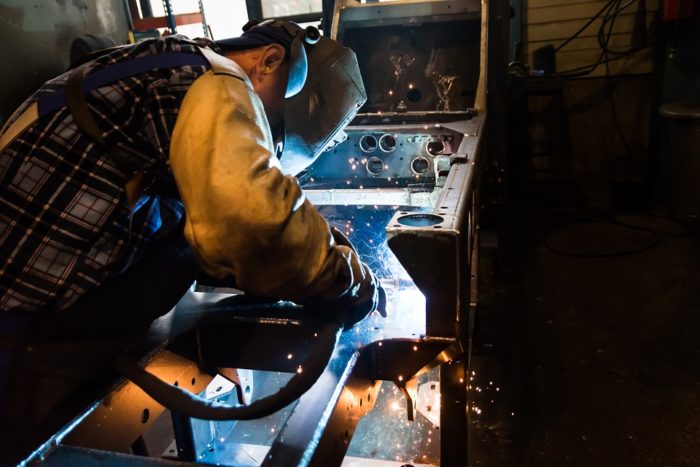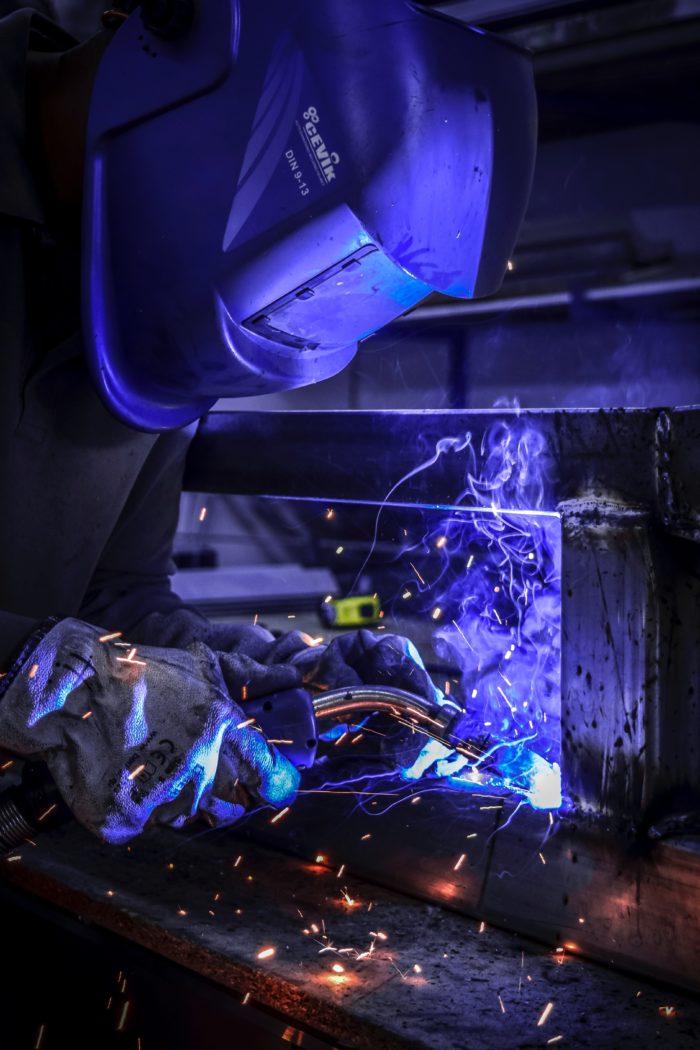Welders running out of gas resources is a normal occurrence, and this is a problem because many welding works will be delayed.
Hence, many welders find alternatives they can use for welding. At some point, when they run out of gas resources and all they have is argon, they can use it. Weld using 100% argon gas is possible but not recommended since it won’t produce a 100% quality weld.
Therefore, pure argon gas can be used for MIG welding. But, as much as possible, don’t. You may be wondering why. If you want to know the answer, this article will tell you.
Can You MIG Weld Using 100% Argon Gas?

Yes. A lot of welders use 100% argon gas in MIG welding due to its necessity. It can be a substitute if they suddenly run out of gas at a very unexpected time. Instead of finding more gas which can be time-consuming, they can just rely on 100% argon so there won’t be delays in their work.
With 100% argon gas, you can MIG weld some base metals like titanium, magnesium, nickel, copper, and aluminum. Although using 100% argon gas shows resourcefulness and productivity, this does not apply to all situations. This may not be compatible with some materials you will weld as it lacks quality.
Why is 100% Argon Not the Best Choice for MIG Welding?
When you use 100% argon gas in MIG welding, the welding process won’t be at its best. Argon is low in ionization potential so it also provides low power and voltage.
It will create an unstable arc. This unstable arc when matched with very low power and voltage stops the fluid formation of, a workable puddle.
Aside from the argon’s low power and voltage quality, it is also low in thermal conductivity so the outer part of the arc usually remains unheated.
Additionally, MIG welding using 100% argon is proven to lose the weld’s ductility. Therefore, it can be easily broken or cut just by simply twisting or bending. I am certain you don’t want your efforts to go to waste by settling for 100% argon gas for your welding plans since it will just produce low-quality welds.
Where Can a 100% Argon be Best Used?
Don’t worry, if all you have is pure argon, this can still be best used differently. A 100% argon can still produce good welds but not in the MIG welding method.
It can be best used in TIG welding instead. Pure argon is a perfect match for TIG welding because it possesses the characteristics needed. A 100% argon can remain inert, even at high temperatures.
Furthermore, MIG welding is different from TIG welding in terms of the application of the filler material and the electrode type used. Hence, they produce different qualities of arc and characteristics of the finished weld.
In TIG welding, a non-consumable tungsten electrode is the one being used and the filler is fed separately into the arc. It then results in the production of a more stable and sturdy arc.

A mixture of CO2 and Argon Gas
Argon gas can be better used in MIG welding if it is blended with some carbon dioxide (CO2). You can mix a 5 to 25% amount of carbon dioxide with your pure argon so you can make better MIG welds.
This mixture can better penetrate and produce fluid, workable puddles. Moreover, when it is no longer pure argon, the temperature will no longer be too low. Instead, it will be moderated. With this, the finished weld becomes more sturdy so it won’t be easily broken by bending or twisting.
Pure argon may be less expensive than a mixture of argon and carbon dioxide but it does not create a quality weld. So, it’s better to not settle for less.
Conclusion
You can MIG weld steel using 100% argon gas.
For instance, this can be used as an alternative if you run out of gas in the middle of the night.
But, this is just suitable for temporary use.
You must acquire a more suitable gas for a better quality of your welds because pure argon makes weak outputs.
Hopefully, you got your answer! Cheers!

